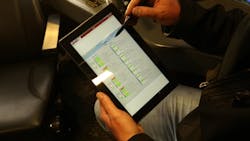Smarter Technology – Raising your Control System’s IQ
By: Dennis Wylie, Global Product Manager, ControlLogix Controllers. This article was originally published on the Rockwell Automation blog.
Does the whole world seem to be getting smarter or am I just imagining it? The new, smarter gadgets of 2015 include smart homes, appliances, baby bottles, wearable tech, ‘selfie’ drones, self-driving cars, and yes, even smart pet feeders!
Pet feeders, you say? I’m not talking about a tall container that dispenses your pet munchies for a weekend. These smart feeders monitor, record, self-clean, dispense food and water, and all but bathe your pet, doing so remotely from your smart phone!
Hearing about these trends – in addition to making my head spin — naturally makes me stop and think about how manufacturing is keeping up in this speed-of-light, technological, IQ race. Are programmable automation controllers and systems smarter than they were before, too?Absolutely.
What makes these newer control systems more intelligent than what you are using now? And how are they different today compared with programmable logic controllers (PLCs) of the past?
Well, older systems were traditionally single-task focused, and while they did intercommunications, it was limited to a few system variables. Control systems of the past were not directly designed for plant-wide communications. They focused on discrete on/off controls with very little capabilities to do process.
Today’s systems can integrate continuous processes, batch processes, motion, safety, discrete, motor and motion control, high availability and redundancy into one common architecture that scales from small to large applications, depending on your applications’ requirements.
It’s not just a single-function pet food dispenser!
These technologies are integrated into one common development environment over one common network that makes it easier for designers to design their systems, operators to operate their systems and maintenance personnel to maintain their systems.
It is, truly, the power of one: multiple control disciplines in one control solution. Yesterday’s PLC 5 systems communicated over a data highway network, but those networks didn’t directly connect to the enterprise or plant network. Today’s products can communicate directly to order-entry systems over high-speed networks, via wired, satellite, WiFi, or radio, using a single, scalable network – EtherNet/IP. EtherNet/IP allows you to configure products and collect data over the same network without the need for black box converters to manipulate and translate the data from network to network.
Modern technology also breeds and demands higher levels of security when compared with systems of the past. Older systems provided a basic level of password protection but they often had back doors or master passwords to circumvent the password. Modern systems provide a much higher level of inherent security that helps ensure that the data being received is coming from a trusted source.
Additionally, new products offer the availability to assign user access rights and credentials to validate that those working on the machine are actually authorized to do so, and that they can only access the data and configuration parameters that they are approved to use. This extends to remote access and remote devices not directly connected to the local plant network, as well. They provide you comfort in the knowledge that it’s really only your dog eating out of the pet dish!
To sum it all up, this smarter, more intelligent, integrated architecture system can result in increased productivity, improved business agility, better security risk mitigation, improved time to market, lower costs, and improved sustainability through extended lifecycles, safer environments and reduced energy usage – and who wouldn’t be happy with that?
So maybe you’re not ready just yet to replace all of your kitchen appliances or old pet dishes with the newest gadgets, but you can see the value of integrating all of the devices in your personal life together. Maybe it’s time to do the same to your automation system. See how a smarter, more productive and secure plant through an integrated architecture can do the same.
Visit our web site to learn more or download our hefty brochure
